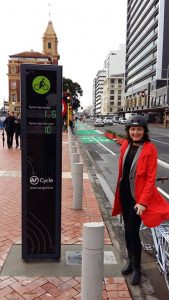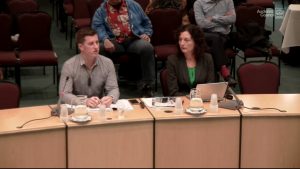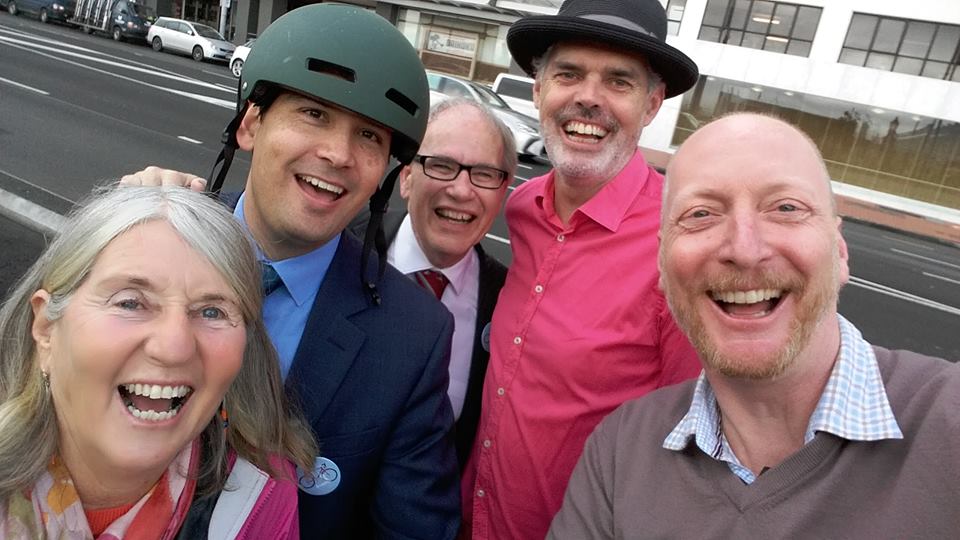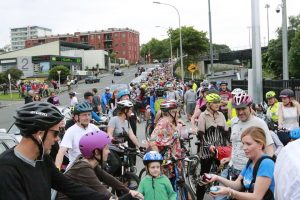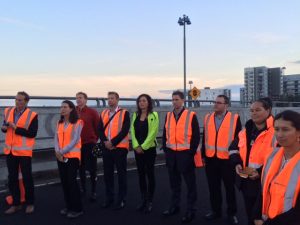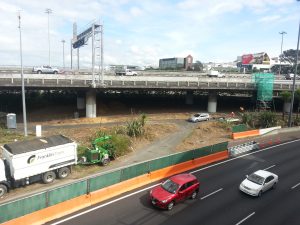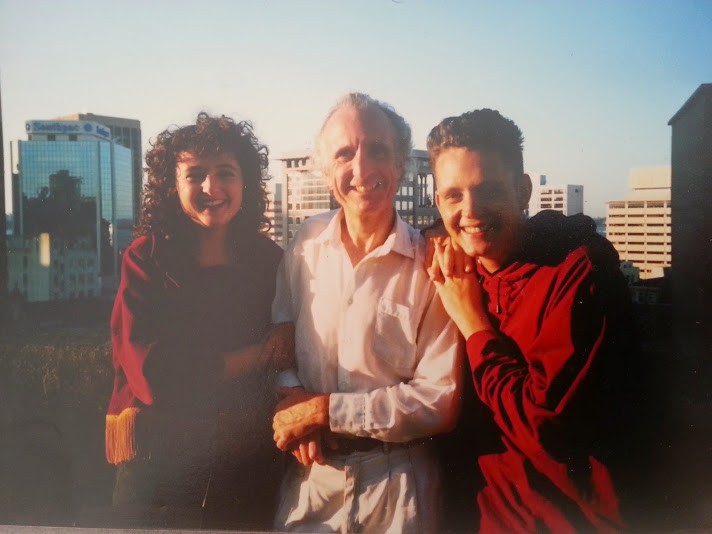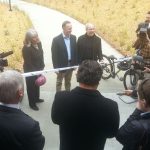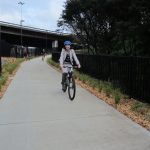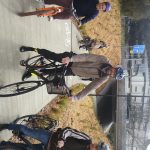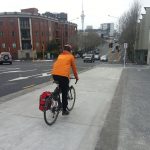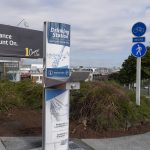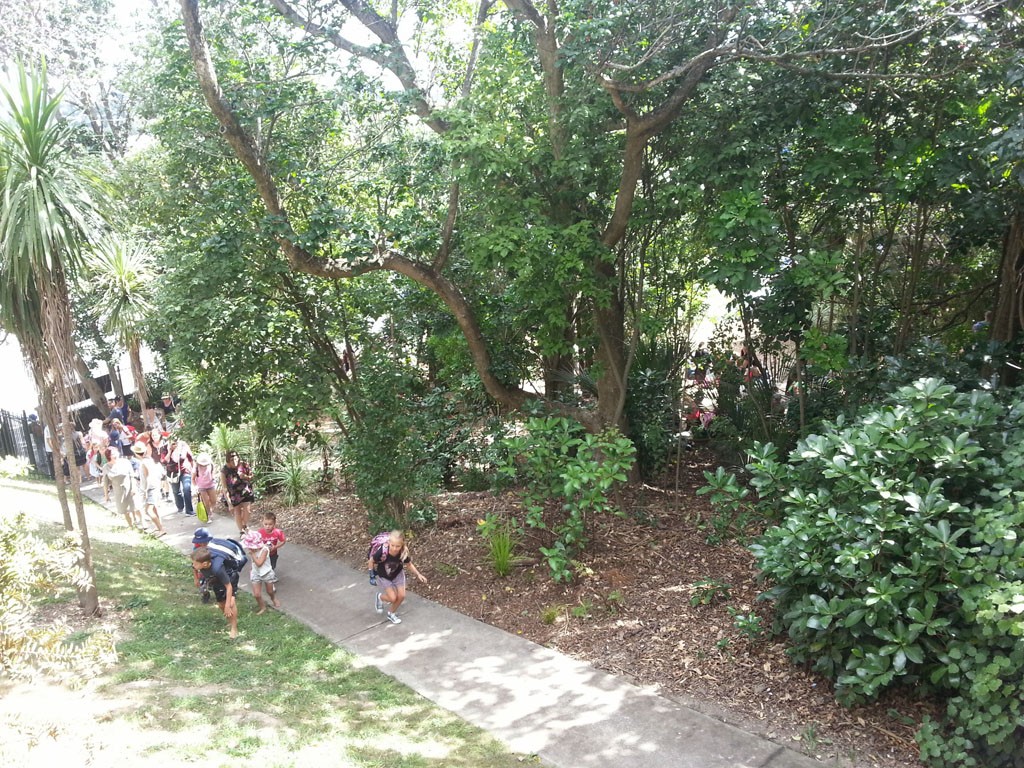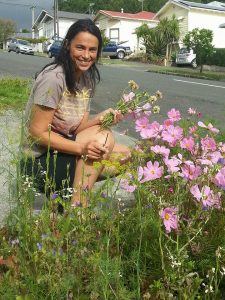St Lukes interchange – update on the proposed widening of Great North Road
In early February NZTA awarded the contract to construct the next stage of Auckland’s Western Ring Route – upgrading the Northwestern Motorway (State Highway 16) between the St Lukes Road and Great North Road interchanges. The $70m project is jointly funded by the NZ Transport Agency and Auckland Transport. (Transport blog reported on the widening of the St Lukes interchange here)
 As part of the project AT and NZTA want to widen Great North Road to provide an extra lane turning onto a newly widened St Lukes overbridge and to feed a two lane motorway onramp . Last year AT sought the Waitemata Local Board’s consent to remove 6 mature pohutukaka trees on Council land opposite MOTAT on Great North Road to create an additional lane (I reported on this in September here).
As part of the project AT and NZTA want to widen Great North Road to provide an extra lane turning onto a newly widened St Lukes overbridge and to feed a two lane motorway onramp . Last year AT sought the Waitemata Local Board’s consent to remove 6 mature pohutukaka trees on Council land opposite MOTAT on Great North Road to create an additional lane (I reported on this in September here).
The Board declined consent but approved for the trees to be trimmed as part of stage one of the project (allowing for the Great North Road lane to be raised to meet the height of the new St Lukes Bridge). The conditions of this approval were confirmed by the Manager – Local and Sports Parks Central (acting under delegated authority) including a request to prioritise cycling and pedestrian improvements as part of the Great North Road corridor management plan that is underway. See the details below
A a meeting on 19 February AT confirmed it is going ahead with seeking a notified resource consent to remove the trees. The public will now have a say in whether AT and NZTA have made a case for widening Great North Road. I certainly don’t think they have and the proposed design is a very poor outcome for PT users, walkers and cyclists.
25 November 2013
To: Aurecon New Zealand Limited
RE: Landowner Approval for works within 820 Great North Road, Grey Lynn (Waitemata Ward) by Auckland Transport and New Zealand Transport Agency.
I refer to your application for landowner approval for works within 820 Great North Road, Grey Lynn. The following approvals were sought from both Auckland Transport and New Zealand Transport Agency:
Auckland Transport
– Temporary use of open space land designated as D06-08 at 820 Great North Road to carry out earthworks and landscape planting associated with the raising of the carriageway of Great North Road and St Lukes Road.
– Pruning of three pohutukawa trees along the road frontage of 820 Great North Road.
The extent of the works is shown in the drawings titled:
– “Single Left Turn Lane Option, Great North Road, General Arrangement” (drawing number: 215023-SK-C-100-103 Rev A); dated 04/10/2013; prepared by Aurecon New Zealand Limited.
– “Single Left Turn Lane Option, Great North Road, Planting Details” (drawing number: 215023-SK-A-919-103 Rev A); not dated; prepared by LA4 Landscape Architects.
New Zealand Transport Agency
– Temporary use of open space land designated as D06-08 at 820 Great North Road for the purpose of carrying out battering (re-contouring) work parallel to the boundary with SH16.
– Works within 820 Great North Road will include the removal of vegetation, earthworks (including battering) and landscape planting.
The extent of the works is shown in the drawings titled:
– “Single Left Turn Lane Option, Great North Road, General Arrangement” (drawing number: 215023-SK-C-100-103 Rev A); dated 04/10/2013; prepared by Aurecon New Zealand Limited.
– “Single Left Turn Lane Option, Great North Road, Planting Details” (drawing number: 215023-SK-A-919-103 Rev A); not dated; prepared by LA4 Landscape Architects.
– “RW-112 St Lukes Road Interchange Northern Abutment Basalt Cut Slope Elevation and Plan Sheets 2 to 4” (drawing numbers: 215023-D-J-240-511, 512 & 513 Rev C); dated 15/07/2013; prepared by Aurecon New Zealand Limited.
This letter provides formal landowner approval on behalf of Auckland Council, subject to the applicant’s formal acceptance of the following conditions:
1. The applicant must contact the Auckland Central Park Ranger – Waitemata Ward (Ph: 301 0101) to arrange a pre-commencement site visit and access to 820 Great North Road.
2. This letter provides landowner approval only and does not replace the requirement for resource consent. All works must be completed in accordance with the rules of the Auckland Council District Plan – Operative Auckland City – Isthmus Section 1999, or the conditions of any resource consent issued by Auckland Council.
Vegetation and Landscape
3. Pruning of trees within 820 Great North Road shall occur in accordance with the Auckland Transport Code of Practice dated 16 June 2013 and detailed on Aurecon’s spreadsheet for “Over Dimension Envelope Pruning Requirements at existing kerb at 5.0m height from design level”.
4. Prior to works commencing beneath the dripline of the pohutukawa trees at 820 Great North Road Auckland Transport and/ or their contractor shall submit to Auckland Council Local and Sports Parks Central for approval, a construction methodology for all works within the dripline of the trees. Specifically detail shall be provided regarding the build up of the carriageway and footpath.
5. The approved construction methodology required by condition 4 shall be implemented on site.
6. All tree work shall be undertaken following agreement on methodology and be carried out to the satisfaction of the Arboriculture and Landscape Advisor – Central.
7. All tree work shall be carried out by Auckland Council approved contractors.
8. All tree pruning and works within the dripline of vegetation within 820 Great North Road shall occur as described in the “Arboricultural Implication Report: Proposed Great North Road (East) carriageway narrowing at the St Lukes Road interchange”, dated October 2013, prepared by The Specimen Tree Company.
9. Auckland Council’s Parks Arborist Simon Cook shall approve the use of and brand of any ‘High Fungal Mulch’ or other treatment to be placed beneath the trees within 820 Great North Road.
10. Prior to landscape planting commencing a detailed planting plan shall be submitted to Auckland Council Local and Sports Parks Central for approval. The planting plan shall be based on the drawing numbered: 215023-SK-A-919-103 Rev A and include details of species, plant numbers and spacing.
11. Removal of the asphalt on the footpath adjacent to 820 Great North Road is to be carried out using a small digger with a straight blade bucket – under arboricultural supervision. Root heave is visible within the existing footpath (not in the carriageway) indicating the presence of Pohutukawa roots within this area. Therefore the construction methodology must include a layer that will continue (even if only in the short term – e.g. 5yrs) to allow air and water passage. The detail is to be approved by the Arboricultural and Landscape Advisor but might, for example, involve a layer of rocks overlaid with geotextile and then a compacted layer overlaid with seal or root cells which are used in a number of roads and footpaths in central Auckland.
12. Where the ‘W’ Barrier is to be installed between the carpark and SH16, the existing carparks and kerbing shall be cut back to allow a 1m planted overhang between the edge of seal and the barrier, ensuring that the resultant carparks meet the requirements of the Unitary Plan. Extend Coprosma repens ‘Poor Knights’ to this area. W Barriers to be on steel supports to minimise their structure. New kerbing to match existing. A 1m overhang between the edge of seal and the barrier can be provided. Based on geotechnical investigation taken it is likely that this 1m strip can be planted, however this will be confirmed on site during the works. Kerb relocation will be carried out in accordance with the District or Unitary Plan rule relevant at the time of construction.
13. The style and location of the guard rail along the southern edge of 820 Great North Road adjacent to the battered edge with the motorway shall be designed in association with Local and Sports Parks Central.
14. Replace all swathes of Muehlenbeckia complexa on Council land with Anamenthale lessionaina.
15. Interplant sunnier mass planted areas of Phormium ‘Dwarf Green’ with Leptospermum scoparium ‘Tui’, planted in massed clumps, towards centres of beds.
16. Replace all proposed flax/anamenthale lining footpath/shared paths replaced by a more upright species, such as Apodasmia or Libertia to prevent trip hazards caused by drooping foliage.
17. Planting maintenance/defects period to be 1 year.
18. Any landscape hardworks (walls, paving etc) is to match existing.
Share with care cycle path
Cycle and pedestrian connections through this precinct are a priority for the Waitemata Local Boards. Achieving a well-planned and connected cycleway is considered part of the mitigation for the loss of open space caused as a result of the project. The Waitemata Local Board and Albert-Eden Local Board request Auckland Transport confirm consultation for the Great North Road Corridor Management Plan Project will be undertaken with the Boards as part of the CMP project and that the following matters will be considered through this process:
- a safe pedestrian and cycle connection on the south side of Great North Road through the motorway intersection
- a safe pedestrian and cycle crossing at the GNR/ Bullock track intersection, which is one of the most dangerous in Auckland
- separated, continuous cycle lanes along GNR
- in collaboration with other stakeholders and Parks, provide connections off GNR via Motions Road and/or Bullock Track/Old Mill Road to Meola Road
- acknowledgement that Great North Road is on the Auckland Cycle Network
- provision of cycle delineators on the north bound cycle lanes on the St Lukes Bridge
- the installation of grab rails where possible
- the number and location of pedestrian crossings at the intersection of St Lukes and Great North Road
- the installation of barriers on pedestrian refuges
20. The work areas shall be adequately fenced to prevent public access within 5m of the work areas.
21. All adjacent Residents which share a common boundary with the Reserve shall be notified five working days prior to commencement of works on site.
22. Any physical work must be carried out in accordance with the requirements of the Health and Safety in Employment Act 1992, Health and Safety in Employment Amendment Act 2002, and any regulations made pursuant to Section 21 of the Act.
23. Works shall not commence before 7:00am nor continue past dusk or 6pm, whichever is earlier. Works within the reserve shall not be undertaken during weekends or public holidays.
24. The works area and machinery located within the Reserve shall be left secure overnight.
25. The park shall be reinstated to the satisfaction of the Parks Advisor. Once work has been reinstated satisfactorily, the Parks Advisor and the Parks and Recreation Advisor will arrange for the bond to be released.
26. This written approval expires one year from the date of the issue of this letter.
Please note, the Council is granting approval for temporary access in its non-regulatory capacity. This approval does not bind the Council in its capacity as a regulatory authority in any way, and any consent or approval given under this agreement is not an approval or consent in its regulatory capacity, and vice versa. The Council will not be liable to any other party if, in its regulatory capacity, the Council declines or imposes conditions on any consent or permission any party seeks for any purpose associated with this approval.
If there are, any amendments to this proposal a new assessment will need to be undertaken by Parks, Sport and Recreation prior to any works commencing.
YS etc
Manager – Local and Sports Parks Central, Parks, Sport and Recreation




